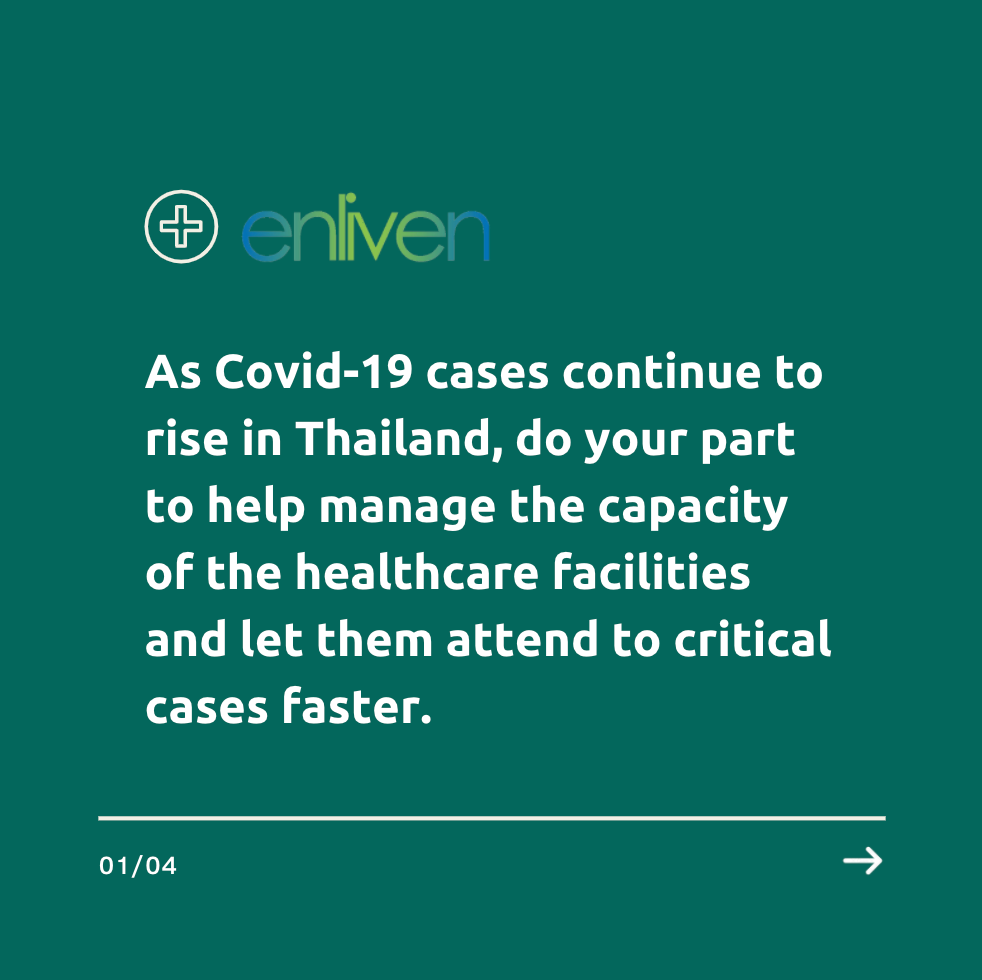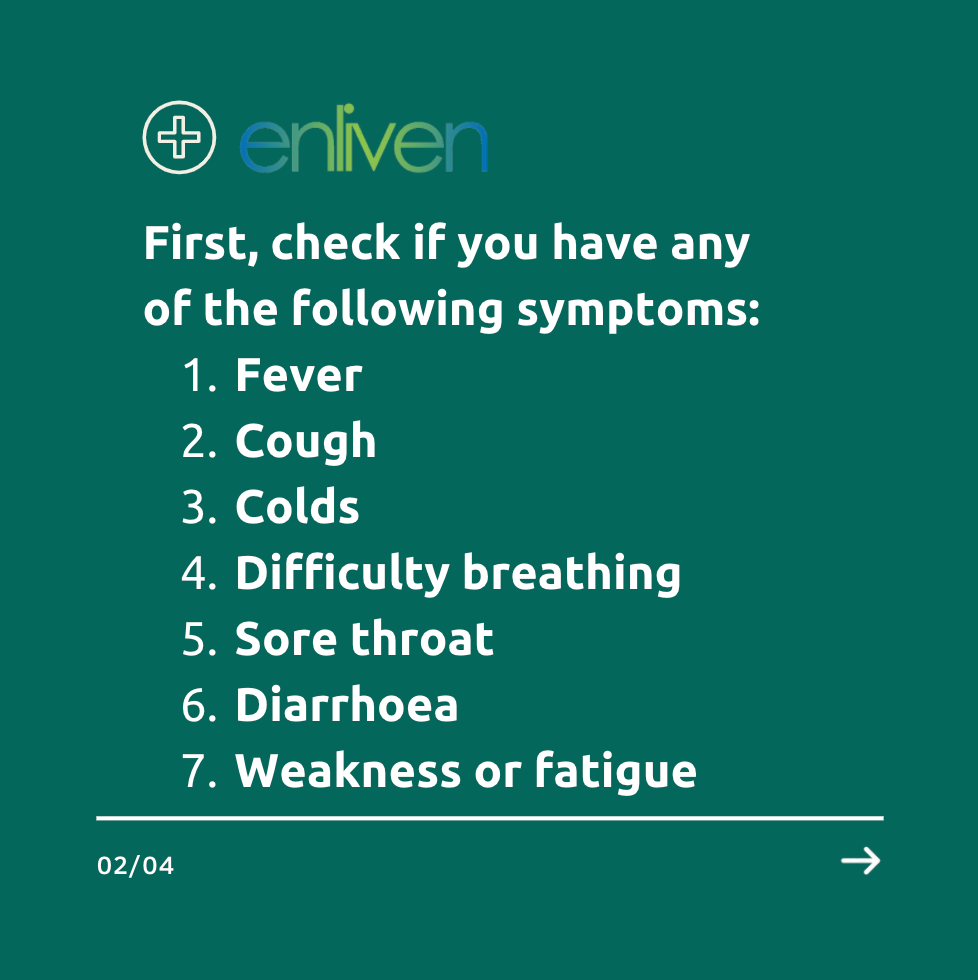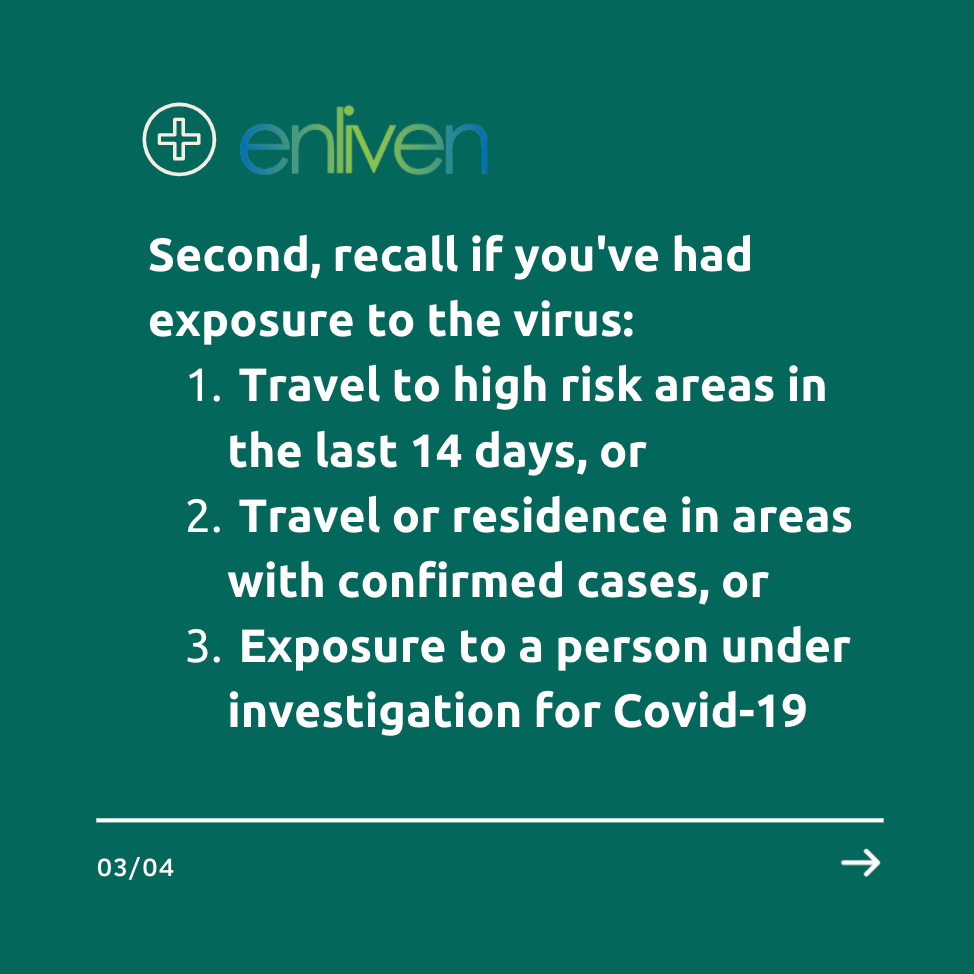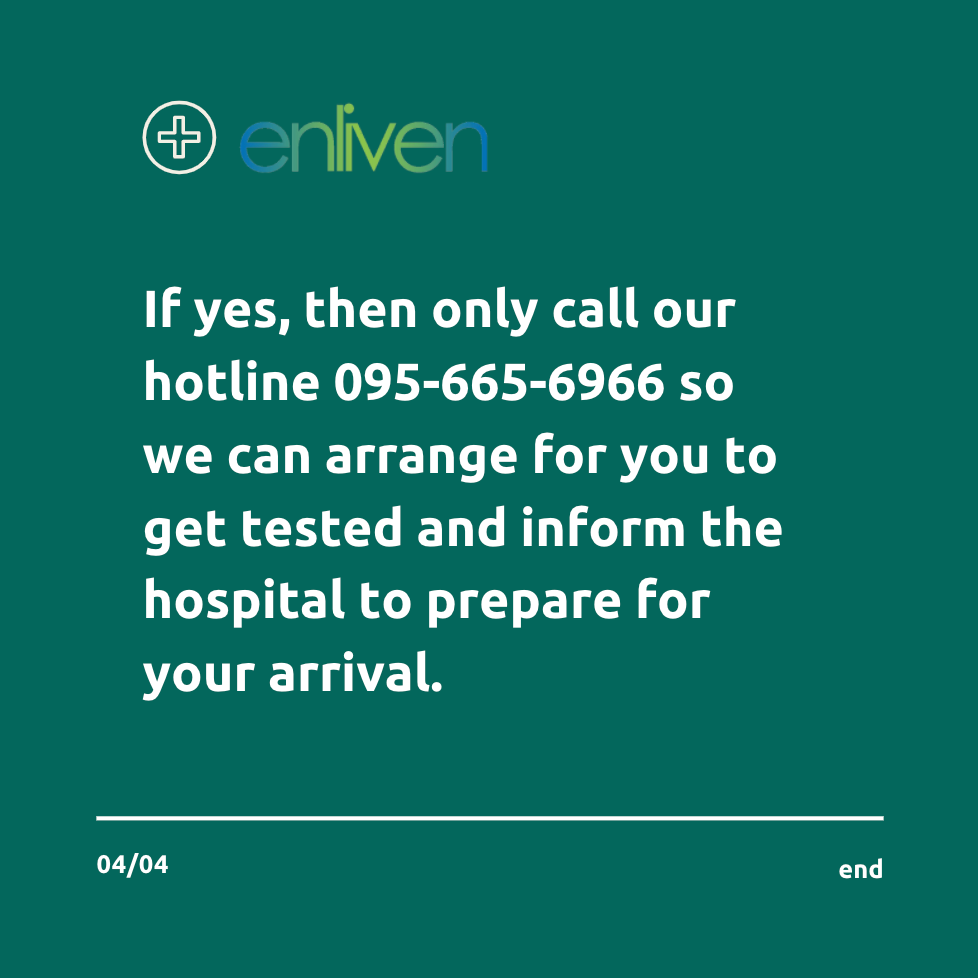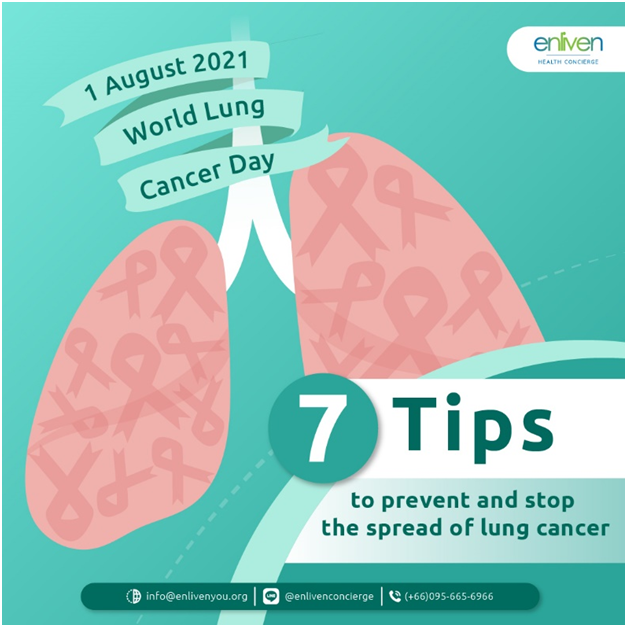
by Admin | Aug 2, 2021 | Uncategorized
– by Pirunrat Nathchayanonth (Yori), Client Coordinator
In recognition of World Lung Cancer Day, we are sharing easy ways for you to recognize the diseaseat the early stage.

“Lung cancer is cancer that forms in tissues of the lung, usually in the cells that line the air passages. It is the leading cause of cancer death in both men and women. There are two main types: small cell lung cancer and non-small cell lung cancer. These two types grow differently and are treated differently.”-Medline Plus (National Library of Medicine)
I know that many people, like me, when we talk about Lung cancer we normally and oftentimes thing about heavy smokers or second hand smokers, but believe it or not, those are not the only causes for this.
So what are other factors that can cause this kind of disease?
American Cancer Society – “Lung cancer in people who don’t smoke can be caused by exposure to radon, secondhand smoke, air pollution, or other factors. Workplace exposures to asbestos, diesel exhaust or certain other chemicals can also cause lung cancers in some people who don’t smoke.
A small portion of lung cancers develop in people with no known risk factors for the disease. Some of these might just be random events that don’t have an outside cause, but others might be due to factors that we don’t yet know about.
Lung cancers in people who don’t smoke are often different from those that occur in people who do. They tend to develop in younger people and often have certain gene changes that are different from those in tumors found in people who smoke. In some cases, these gene changes can be used to guide treatment.”
No worries if you’re not familiar with a few words in there. Read below to find out more about them
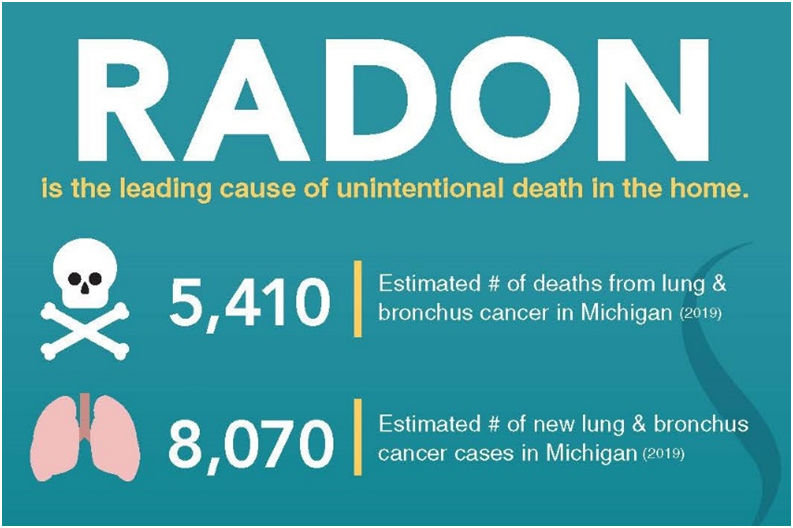
Radon is natural radioactive gas that comes from tiny amounts of uranium present in all rocks and soils. It can sometimes be found in buildings.
If radon is breathed in, it can damage your lungs, particularly if you’re a smoker. Radon gas causes a small number of lung cancer deaths in England.
Occupational Exposure and Pollution
Exposure to certain chemicals and substances which are used in several occupations and industries may increase your risk of developing lung cancer. These chemicals and substances include:
• Arsenic – a known human carcinogen associated with skin, lung, bladder, kidney, and liver cancer. A new study that replicates how humans are exposed to arsenic through their whole lifetime found that mice exposed to low concentrations of arsenic in drinking water developed lung cancer. The concentrations in the drinking water given to the mice were similar to what humans, who use water from contaminated wells, might consume.
• Asbestos – a fiber-like material that was once used in buildings for insulation, flooring and roofing. Its use has been fully banned in the UK since 1999.While asbestos can be dangerous, it’s not harmful if left alone. But if material containing asbestos is damaged, it can release a fine dust that contains asbestos fibers.When the dust is breathed in, the asbestos fibers enter the lungs and can gradually damage them over time.
• Beryllium – Direct contact with beryllium fumes or dusts may injure the exposed areas of the body, such as the eyes or the skin. Skin sensitization may also occur. Beryllium is also a known cancer-causing substance, with higher levels of lung cancer being reported.
• Cadmium – Highly toxic and exposure is known to cause cancer. It is primarily associated with human lung, prostate, and kidney cancers, and recently pancreatic cancer. It has also been associated with cancers of the breast and urinary bladder.
• Coal and Coke fumes – Coke oven emissions come from large ovens that are used to heat coal to produce coke, which is used to manufacture iron and steel. The emissions are complex mixtures of dust, vapors, and gases that typically include carcinogens such as cadmium and arsenic.
• Silica – Silica is a substance naturally found in certain types of stone, rock, sand and clay. Working with these materials can create a very fine dust that can be easily inhaled.Once inside the lungs, it causes swelling (inflammation) and gradually leads to areas of hardened and scarred lung tissue (fibrosis). Lung tissue that’s scarred in this way doesn’t function properly.
• Nickel – Skin complaints and respiratory effects have been reported from exposure to nickel. Studies have reported an increased risk of lung and nasal cancers from exposure to nickel refinery dusts and nickel subsulfide. Nickel compounds are classified as Group 1 carcinogen by the IARC, meaning they are carcinogenic to humans.
Research also suggests that being exposed to diesel fumes over many years increases your risk of developing lung cancer. One study has shown your risk of developing lung cancer increases by around 33% if you live in an area with high levels of nitrogen oxide gases (mostly produced by cars and other vehicles).
Signs and symptoms of lung cancer
Mayo clinic – “Lung cancer typically doesn’t cause signs and symptoms in its earliest stages. Signs and symptoms of lung cancer typically occur when the disease is advanced.
1. A new cough that doesn’t go away
2. Coughing up blood, even a small amount
3. Shortness of breath
4. Chest pain
5. Hoarseness
6. Losing weight without trying
7. Bone pain
8. Headache
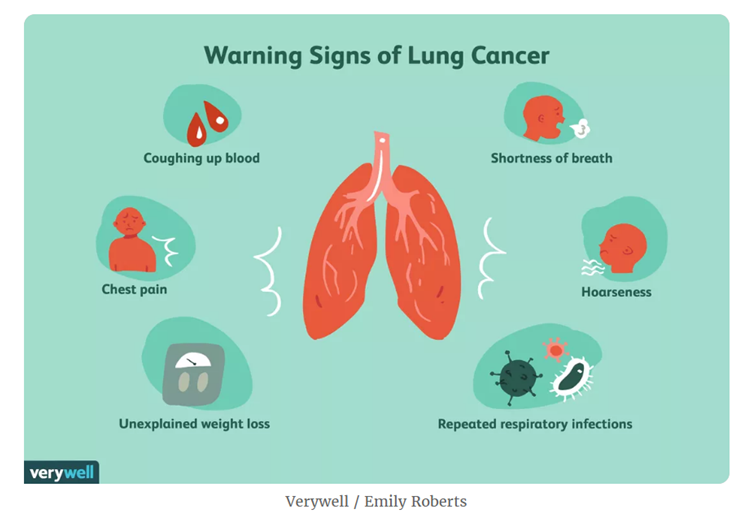
Risk factors for lung cancer
The American Lung Association says that men who smoke are 23 times more likely to develop lung cancer than nonsmokers. However, lung cancer in never-smokers is the seventh most common cancer worldwide.
Although lung cancer is the leading cause of cancer death among men and women in the United States, female smokers appear to be at increased risk. After controlling for the number of cigarettes smoked, female sex imparts a significant, independent risk for most histologic types of lung cancer.
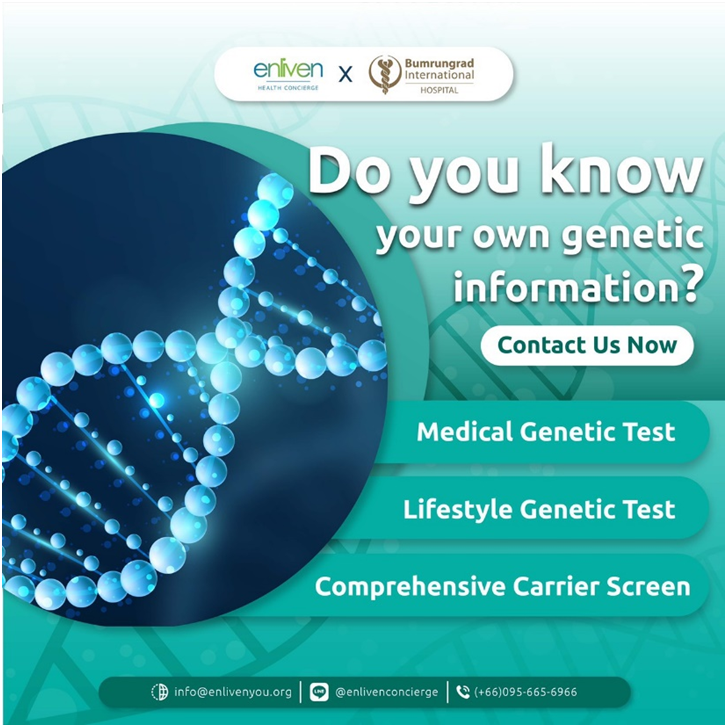
Most people diagnosed with lung cancer are 65 or older; a very small number of people diagnosed are younger than 45. The average age of people when diagnosed is about 70. Lung cancer is by far the leading cause of cancer death among both men and women, making up almost 25% of all cancer deaths.
If you are in doubt about your health, we strongly suggest that you have your health checked on regular basis and consult your doctor about this. If you have family history of cancer, or suspect that you are in high risk category, our partner also offers genetic screening as well. And if you don’t know where to start, drop us a message or email,we’re more than happy to assist😊
References
https://medlineplus.gov/lungcancer.html
https://www.mayoclinic.org/diseases-conditions/lung-cancer/symptoms-causes/syc-20374620
https://www.cancer.org/cancer/lung-cancer/causes-risks-prevention/what-causes.html
https://www.nhs.uk/conditions/lung-cancer/causes/
https://www.nhs.uk/conditions/asbestosis/
https://www.nhs.uk/conditions/silicosis/
https://www.niehs.nih.gov/health/topics/agents/arsenic/index.cfm
https://www.ccohs.ca/oshanswers/diseases/beryllium.html
https://progressreport.cancer.gov/prevention/cadmium#:~:text=Cadmium%20and%20its%20compounds%20are,the%20breast%20and%20urinary%20bladder.
https://www.cancer.gov/about-cancer/causes-prevention/risk/substances/coke-oven#:~:text=Coke%20oven%20emissions%20come%20from,such%20as%20cadmium%20and%20arsenic.
https://roadmaponcarcinogens.eu › nickel
https://www.dana-farber.org/health-library/articles/cancer-mythbusters-smoking-and-lung-cancer/#:~:text=The%20American%20Lung%20Association%20says,seventh%20most%20common%20cancer%20worldwide.
https://pubmed.ncbi.nlm.nih.gov/15217534/#:~:text=Although%20lung%20cancer%20is%20the,histologic%20types%20of%20lung%20cancer.
https://www.michigan.gov/egle/0,9429,7-135-3312_4120_4196-11722–,00.html

by Admin | Jul 27, 2021 | Uncategorized
– by Pirunrat Nathchayanonth (Yori), Client Coordinator

The healthcare system is overwhelmed. The 4th wave of this COVID-19 in Thailand is unprecedented and has been the most damaging. The last 3 weeks have not been easy for anyone, particularly those who have been detected with Covid-19.
Hospitals are out of beds and there’s a long waiting list everywhere. Many people who tested positive now are asymptomatic, so to lessen the load on the healthcare system and the medical staff, the new law was put in place – home isolation is allowed.
Can people who are Covid positive really live under the same roof with those who are not? Yes! I’m telling you it is possible.
Last year, my flat mate was covid positive. We didn’t know what to do, because the hospital didn’t have a bed for her nor an ambulance to come pick her up so we had to remain in the same apartment for a week. She was asymptomatic.
Luckily, we only had to share the common living area such as the dining room and a kitchen as we both had our own rooms. We were told to completely isolate, meaning she cannot leave her room at all. What we did in that week was, if I was inside my room, she can come out briefly for whatever she may need and vice-versa. Whenever she finished in the kitchen, I would wipe every surface she might have touched such as the fridge handle, sink faucet, stove knobs and light switches with Clorox. You can never be too careful. Other than that, I was still exercising in the living room and we used the same washing machine for our laundry. To date, I’m still covid free.
Now, let’s go back to the subject. How do you home isolate?
Self-Isolation
1) Separate yourself in one part of the house. Stay in your own room if possible. If you’re sharing a room/apartment, stay at least 1-2m away from each other. This includes separate items for personal use.
2) Items you will need just for you – bin with a lid, box of tissues, towel, alcohol, gloves, mask, thermometer, oximeter, ice or cold pads, water, medicines, personal items.
3) Wear your mask all the time.
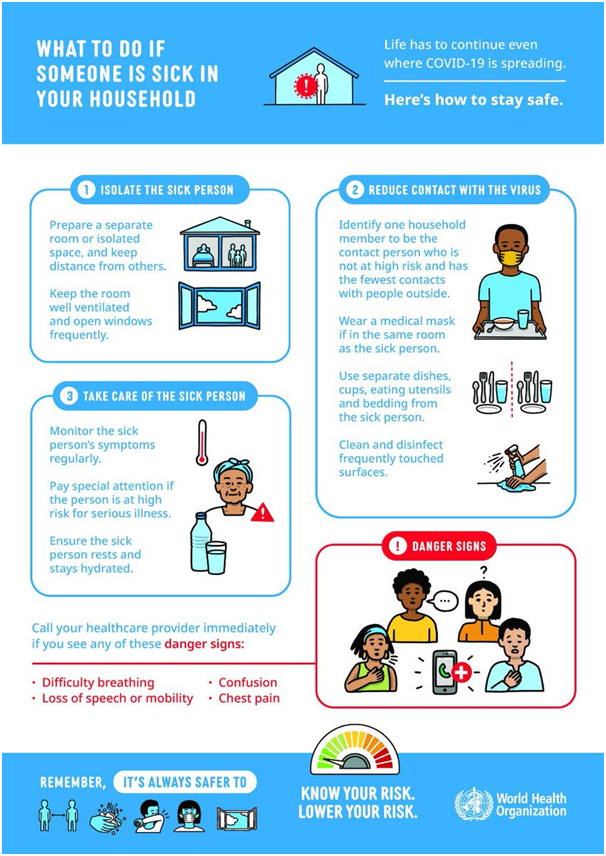
4) Wash your hands, and keep them away from your face.
5) If possible, assign a person who can help take care of you. Someone who’s healthy, proficient and communicates well. He or she must wear gloves and a mask before taking or giving any items from and to the positive person.
6) If you’re too tired, skip the shower and just use wet cloth to clean yourself. It is not recommended to wash and submerge yourself under the water, it makes your lungs work too hard.
7) In a big family, it is very easy for contagious diseases to be widespread. Sanitize the areas like staircase and bathroom bars, knobs often.
8) Drink 2 liters of water per day, avg 1 glass/hour. Always keep yourself hydrated, unless the doctor suggests otherwise. No alcohol, caffeine drinks.
9) Sleep well and rest fully.
10) Minimize your screen time.
11) Manage your emotions and do something that will lift up your energy levels.
12) If you have difficulty in breathing after rolling over, difficulty in keeping food down, having high fever or low oxygen, proceed to the ER at the nearest hospital.
For positive patients who require a bed, we strongly suggest that you contact your primary facility or doctor immediately. Please also register yourself through 1668 and 1330 or any other government organizations to coordinate your care as soon as possible.

Keep well and safe everyone. We will get through this together! For emotional support, feel free to contact us anytime!

by Admin | Jul 19, 2021 | Uncategorized
– by Pirunrat Nathchayanonth (Yori), Client Coordinator

When we talk about a “Check-up” what do you normally think about?
I’ll be honest, for me, it would mean drawing blood and peeing in the cup. Chest x-ray and a consultation where the doctor would just tell me if there’s something that I should be worry about. And again, I wasn’t even thinking about having my eyes checked along with it. And usually the basic health check-up doesn’t include that. I only go and see an ophthalmologist when I need a new prescription because my glasses are getting blurry again. Is anyone like me?
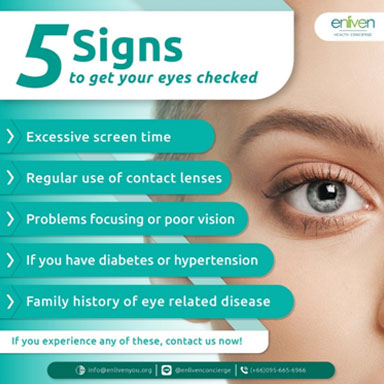
But you definitely should get your eyes checkedproperly and as regularly as you’re getting your general health checks. Not only because these are delicate organs that’s used constantly throughout the day from the moment you open them up until the time you shut them again, but also because “Some eye diseases may not show any symptoms at the initial stage such as glaucoma, Macular degeneration, Diabetic Retinopathy.” – Phyathai Hospital
What are they? And how do you know if you have it or are at risk?
Glaucoma is a common eye condition where the optic nerve, which connects the eye to the brain, becomes damaged. It’s usually caused by fluid building up in the front part of the eye, which increases pressure inside the eye. Glaucoma can lead to loss of vision if it’s not diagnosed and treated early.

Symptoms of Glaucoma
A. Intense eye pain
B. Nausea and vomiting
C. Having a red eye
D. Headache
E. Tenderness around the eyes
F. Seeing rings around lights
G. Blurred vision

Macular degeneration
Age-related macular degeneration (AMD) is a problem with your retina. It happens when a part of the retina called the macula is damaged. With AMD you lose your central vision. You cannot see fine details, whether you are looking at something close or far. But your peripheral (side) vision will still be normal. For instance, imagine you are looking at a clock with hands. With AMD, you might see the clock’s numbers but not the hands.
AMD is very common. It is a leading cause of vision loss in people 50 years or older. There are two types of MD
1. Dry AMD – About 80% of people who have AMD have the dry form. Dry AMD is when parts of the macula get thinner with age and tiny clumps of protein called drusen grow. You slowly lose central vision. There is no way to treat dry AMD yet.
2. Wet AMD – This form is less common but much more serious. Wet AMD is when new, abnormal blood vessels grow under the retina. These vessels may leak blood or other fluids, causing scarring of the macula. You lose vision faster with wet AMD than with dry AMD. Many people don’t realize they have AMD until their vision is very blurry. This is why it is important to have regular visits to an ophthalmologist. He or she can look for early signs of AMD before you have any vision problems.

Symptoms of Macular Degeneration
A. Reduction in central vision
B. Distortion of straight lines in your field of vision
C. The need for brighter lighting
D. Difficulty adapting to low lights
E. Blurriness
F. Trouble recognizing faces
G. Retinal damage
Some symptoms of wet macular degeneration resemble those of dry macular degeneration, such as visual distortions and reduced central vision.
If you have wet macular degeneration, you may also experience:
A. A blurry spot in your field of vision
B. A dark spot in the center of your vision due to blood vessels bleeding or leaking fluid
C. Hazy vision
D. Rapidly worsening symptoms
Wet macular degeneration progresses more quickly than dry macular degeneration.
Diabetic Retinopathy is an eye condition that can cause vision loss and blindness in people who have diabetes. It affects blood vessels in the retina (the light-sensitive layer of tissue in the back of your eye).

Symptoms of Diabetic Retinopathy
The early stages of diabetic retinopathy usually don’t have any symptoms. Some people notice changes in their vision, like trouble reading or seeing faraway objects. These changes may come and go.

In later stages of the disease, blood vessels in the retina start to bleed into the vitreous (gel-like fluid in the center of the eye). If this happens, you may see dark, floating spots or streaks that look like cobwebs. Sometimes, the spots clear up on their own — but it’s important to get treatment right away. Without treatment, the bleeding can happen again, get worse, or cause scarring.
Cataracts
Cataracts are an eye condition caused when the lens of the eye develops cloudy patches. Over time these patches usually grow bigger, causing blurry, misty vision.

There are different types of cataracts, depending on which part of the eye’s lens is affected: they can affect the centre, the sides, or the back of the lens. They can appear in just one eye or in both eyes, although they may not develop at the same time. Eventually, if they’re not treated, cataracts can lead to blindness.
Symptoms of cataracts
• Blurred, dim or misty vision
• Difficulty seeing in low light or at night
• Sensitivity to light: lights look too bright or glaring
• Colors look faded or muted
• Seeing a ‘halo’ around bright lights
• Everything looks more ‘washed out’

If you have cataracts, things can start to look dim, blurred or distorted, as if you’re looking through dirty glass. Your vision may seem cloudy, and it can also be hard to make out details or colors.

I know they’re all sound scary. Like mentioned, these diseases normally doesn’t show the abnormalities right away. They take time to build up and sometimes before you know it, it’s too late.
Don’t wait until something goes wrong! You can call us now to book your appointment for eye check-up as a preventive plan. Or if you want to fix what is already fault, we can connect you to the right specialist who will recommend the most suitable treatment for you. Contact us now, we are here to help 😊
Sources for more information
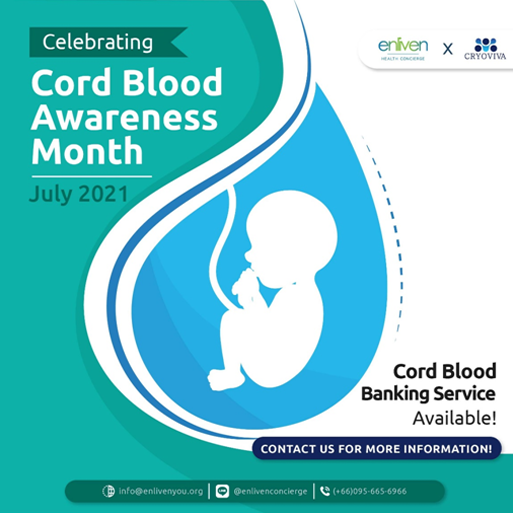
by Admin | Jul 8, 2021 | Uncategorized
– by Pirunrat Nathchayanonth (Yori), Client Coordinator

Cord blood or Stem cell banking isn’t something new but how much do you know about it or really understand it?
Now when we talk about cord blood, we also talk about stem cells. They’re like inseparable twins. Why? Because, they are within each other!
“Cord blood contains blood (haematopoietic) stem cells, which can produce all the other cells found in blood, including cells of the immune system.” – EuroStemcell (https://www.eurostemcell.org/cord-blood-stem-cells-current-uses-and-future-challenges#:~:text=Cord%20blood%20contains%20blood%20(haematopoietic,blood%20diseases%2C%20such%20as%20leukaemia.)
For those of you who’s not that much into science like I am. Let’s get to know them better, shall we?
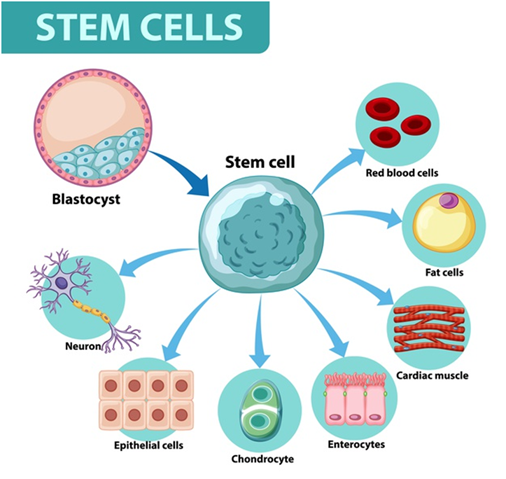
Stem cells –
They are categorized into two groups –
- Mesenchymal stem cells (MSCs) can make several types of cells belonging to our skeletal tissues, such as cartilage, bone and fat. This includes –
- Cord Tissue – “Your baby’s umbilical cord is made of tissue and contains blood. Umbilical cord tissue is home to several cell types, including mesenchymal stem cells (MSCs), which scientists think may be great at acting like a body’s emergency medical team.” – CBR (https://www.cordblood.com/benefits-cord-blood/cord-tissue)
- Amniotic Membrane – Amniotic membrane, or amnion, is the innermost layer of the placenta and consists of a thick basement membrane and an avascular stromal matrix. Amniotic membrane transplantation has been used as a graft or as a dressing in different surgical subspecialties. – American Academy of Ophthalmology (https://eyewiki.aao.org/Amniotic_Membrane_Transplant)
- Adipose – Adipose tissue (AT) is considered one of the largest endocrine organs in the body as well as an active tissue for cellular reactions and metabolic homeostasis rather than an inert tissue for energy storage. The functional pleiotropism of AT relies on its ability to synthesize and release a large number of hormones, cytokines, extracellular matrix proteins and growth and vasoactive factors, collectively termed adipokines, that influence a variety of physiological and pathophysiological processes. – Science Direct (https://www.sciencedirect.com/topics/medicine-and-dentistry/adipose-tissue
- Hematopoietic stem cells (HSC) – These are the blood cell-forming adult stem cells found in bone marrow (a spongy tissue found in the centre of some bones)that can turn into different types of blood cells.
The 3 main types of blood cell they can become are:
In normal adult, HSC is not circulating in blood stream but only resides in Bone Marrow.
In new born baby, just after delivery, HSC remains in umbilical vein which is the only chance to collect HSC (as umbilical cord blood) without pain.
I’m sure you’re familiar with the following –
- Cord blood – “Cord blood is the blood that remains in the placenta and umbilical cord following the birth of your baby.” – NSH (https://www.nhsbt.nhs.uk/cord-blood-bank/what-is-cord-blood/)
- Bone marrow – is part of our immune system which protects us from infection and disease. It is found inside our bones, mainly in the hip bone and the breast bone. The bone marrow is where stem cells are made. – MacMillan Cancer Support (https://www.macmillan.org.uk/cancer-information-and-support/treatment/types-of-treatment/stem-cell-and-bone-marrow-transplants/stem-cells-and-bone-marrow)
But because July is the Cord Blood awareness month, we will focus on this one in particular.
What’s the fuss?

“Currently, cord blood stem cells have been approved by the FDA in the treatment of nearly 80 diseases. In addition to these approved therapies, there are close to 350 clinical trials underway investigating the use of umbilical cord blood and umbilical cord tissue for stem cell transplantation, and this number promises to steadily increase. Cord blood stem cells are approved for numerous types of malignancies, anemias, inherited metabolic disorders and deficiencies of the immune system. The majority of cord blood transplants to date have been performed in patients younger than 18 years; however, advancements in regenerative medicine show promise for all ages.” – Cryo-cell International (https://www.cryo-cell.com/treatments-and-research)
For years, countless of research has been conducted to find the cure for nasty disease like cancer and the answer lies in the one thing that we were born with!
Since most of this is placenta harvest and samples are normally being collected at birth, this should be one of the steps in your family planning. So where do we start?
Look into Cord Blood or Stem Cells Banking
“Cord blood banking, sometimes called stem cell banking or stem cell preservation, is the process of collecting the blood that remains in the umbilical cord, processing the blood to extract the stem cells, and cryogenically freezing the cells for potential future medical use.” – ViaCord (https://www.viacord.com/why-bank/cord-blood/)

https://www.cordbloodbank.com/what-are-stem-cells/what-is-cord-blood/
If you’re in Thailand and you don’t know where to start, please allow us to direct you to Cryoviva (http://cryoviva.com/), one of our longest running partners specializes in this field. With internationally renowned standards and innovative procedure, they’re the leader in the region.
At Cryoviva, “Your Life is Your Choice”! With 12 years of experience and being one of the world’s top 10 Stem Cell storage company including many recognitions from certified institute worldwide, rest assured you have nothing to worry about.

Exclusively for Enliven clients we are now offering 4 Special Cord Blood Banking Packages available for both MSCs and HSCs. Contact us now for more details!
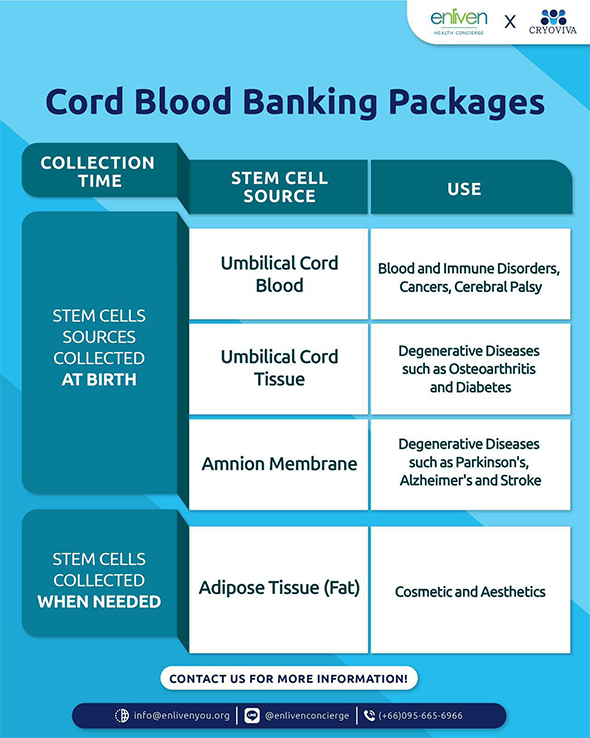
by Admin | Jun 30, 2021 | Uncategorized
In light of the current COVID9 wave in Thailand and the overwhelm the healthcare system is experiencing, Enliven Health Concierge advises you to follow these steps before deciding to take a COVID19 Test. If you do need to take one, we are here to help arrange it!
– by Pirunrat Nathchayanonth (Yori), Client Coordinator
My children have Covid-19.
That’s not a sentence I thought I would be writing. My children have… tantrums, wrestling matches, a love for too much chocolate, more screen time than recommended. That’s what lockdown life in the pandemic has meant for us.
When their test results came back positive my initial reaction was: “If Covid doesn’t kill their nanny first, I will kill her myself.” I wept at the unknowns of this virus that could mark the lives of a two- and four-year-old that didn’t ask for any of this.
Our nanny had tested positive for Covid a few days earlier after experiencing terrible symptoms of fever, body aches and chills. Our house scrambled into action (of our own social responsibility as the BMA-operated hospital that diagnosed her did not track nor trace us for further testing – but that’s a different story). I decided to swab only the adults who had come into contact with her to avoid putting our young children through an uncomfortable and invasive procedure.
We received the results of our PCR test after a tense, sleepless night on a Sunday morning. All four adults were confirmed negative for the novel – but awful – coronavirus. We rejoiced! We talked about having a Covid-free party (joking only). Instead we ordered pizza and sensibly ate it privately in our home while relishing knowing we had escaped this disease for one more day.
That night my four-year-old son began having a fever. It’s probably some random illness related to the weather change, I told myself. If I – his mother – who shares more saliva air time with him than anyone in this world was Covid-negative there was no way he could have contracted it. Right? My denial was shook the next morning after he threw up the contents of his breakfast.
That afternoon my two-year-old daughter woke up from her nap with a fever. There could be no further delay – we arranged to get them tested the next day.
The private hospital called us two hours later around 11:30am with the children’s positive results. A hospital van – the sterile, plastic, cold Covid-mobile – would be picking us up at our residence around 3pm the same day to enter government-mandated isolation. Since the kids symptoms weren’t extremely severe they placed us in a “hospitel” for monitoring and treatment if necessary. My husband and I – although we tested negative – would be able to stay to take care of the kids due to their young age, a privilege that is not afforded to everyone but a health risk for us as well.
The swiftness of the hospital to remove my two positive blights from the general population must be commended. I never had a choice anyway. Home quarantine was not an option. At the time of writing, Thai government regulations decree that those who test positive via a PCR test must isolate for a minimum of 14 days at a hospital, field hospital or “hospitel”. That meant where and how my children would be cared for was out of my hands.
Every day we are bombarded with statistics of those who have contracted Covid. At first the numbers may have been faceless but I venture to say that everyone reading this now has probably been directly or indirectly affected by a Covid patient. Since the so-called third wave began in April 2021, the numbers reaching over 200,000 cases have only been increasing and the sought-after hospital beds only decreasing. Every so often we read that hospitals are temporarily suspending Covid testing because they simply don’t have the space and support to take in infected patients.
“We have been working with our private hospital partners to ensure all our patients get hospital beds once tested positive. There is a limited number of beds available, and the law currently states that anyone who tests positive is to be allocated a hospital bed. The situation we have now is that the severe patients are waiting for beds occupied by mild patients. If we prioritise patients with severe symptoms, the load on the already stressed healthcare system would be lessened, and the patients who truly need to be in the hospital to receive care would have a higher chance of getting a bed,” states Devi Bajaj, co-founder of Enliven Health Concierge, a local healthcare liaison that facilitates the medical care of patients.
Being here in a quarantine that was chosen for my children is adding a different layer to the crisis surrounding the pandemic. Why wasn’t the option for those with mild symptoms to self-isolate at home part of the initial plan to ease the burden on the healthcare system?
Every morning a nurse makes her rounds to our floor to check my children’s oxygen levels and temperature. We can hear the crinkling of her plastic PPE suit before she even reaches our door. Behind her N-95 mask layered with a face and hair shield is a healthcare worker doing 12 hour shifts. We want to feel reassured that she is here to ensure the optimal health of my children; but then we remember it’s Covid – she doesn’t want to come within six feet of us if she can help it.
Her gloves and feet coverings are securely and excessively taped to the protective gear so that not one cell of her skin is exposed to those with the virus. After she checks the patients on the floor, she must return downstairs, strip off all her equipment and the clothes underneath, take a shower and put on new clothes and a new suit again. After they escort a new patient in, the nurses must bathe and change their clothes as well. Some healthcare workers here say they can last maximum two hours in the suit, but they are stifled and stuffed underneath. I see droplets of moisture forming inside the plastic protecting the nurse’s feet and tension in the face behind her barriers.
A paediatrician at a leading private hospital in Bangkok, speaking on the condition of anonymity, offers insight into the government-mandated quarantine: “The number 14 is the guideline experts are using for the whole country to track [Covid] symptoms and its contagion. If patients go back home we cannot control their quarantine and ensure they will stay home. There are economic factors for lack of [home] quarantine here. Not everyone can stay home for 14 days because they need to go out and make money.”
The construct of “home” is different based on your status. Within one night of being removed from our surroundings, I felt my children would suffer far worse consequences being holed up for 14 days in an uncommon environment than if they were allowed to safely isolate at our house.
I started making calls to their doctors and various hospital representatives that if the children’s X-rays and blood tests came back optimistic and their symptoms decreased, we wanted to responsibly and legally pursue the option to go back home and finish up the days left of our quarantine. The answer has been a hard no.
The blanket regulation of government-ordered isolation surrounding all Covid patients completely eliminates mental health support for adults and children. It also doesn’t take into account socioeconomic factors for those who can’t afford to be removed from their lives for two weeks or to work from home. That’s why many are not opting to get tested officially at hospitals so they can continue to try to earn to support themselves and their family.
This government policy is also a direct insult to their confidence of the Thai people; do they believe we are all so untrustworthy that we think being in “quarantine” means we can still walk to 7-Eleven and buy a hot dog?
But in a pandemic there is no room for individuals; only statistics to do what is deemed best for the greater good.
As the government continues to propose misguided lockdown measures, delayed and limited vaccines and general miscommunication, their insistence of state-controlled quarantine and lack of other options is coming at the risk of the population’s sanity.
“Patients do need open air and sunlight. If we can provide that safely, it would be good in this crisis. As more kids are getting Covid, they need more support. A hospital’s job is to make the children’s ward as similar to home as possible and parents must make sure [their kids] don’t feel like they are being punished. We need a better solution for the safety of everyone in the realm of mental health,” the paediatrician adds.
We try not to count the days. My son drives his toy police car around the bed over and over. He doesn’t realise we are actually the ones being jailed.
Page 5 of 7« First«...34567»

























